New GASHEE CCCA Publication: In a recent study titled: Treatment-Refractory Central Centrifugal Cicatricial Alopecia Responsive to a Novel Botanical Treatment published by Dove Medical Press in its peer-reviewed journal Clinical, Cosmetic and Investigational Dermatology, four women who had failed several treatments with drugs responded to a new plant-based formulation – Dr. UGro Gashee (Manhattan Beach, CA).
According to the report, all the women in the case series who used Gashee in its topical or oral form showed notable hair improvements in hair fullness and cessation of hair symptoms.
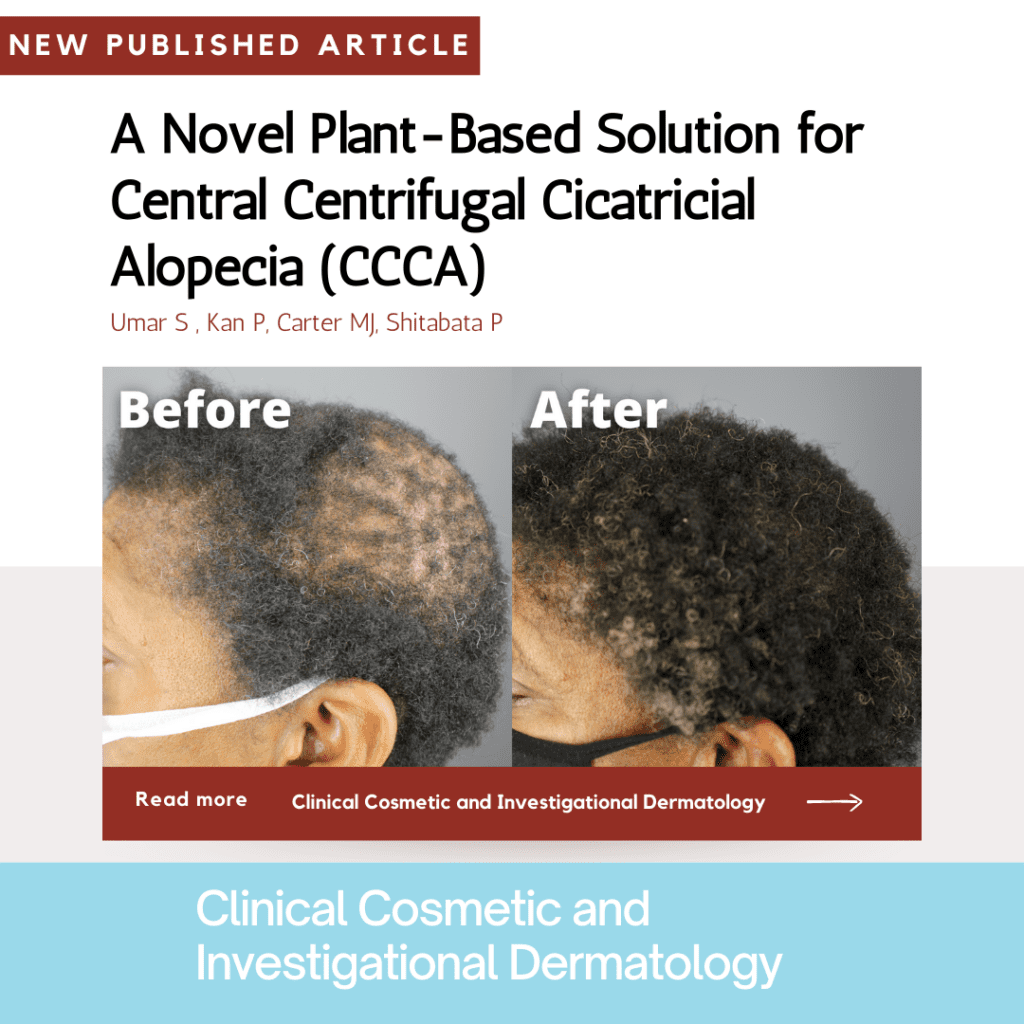
What is Central Centrifugal Cicatricial Alopecia & Who Does it Affect?
Central centrifugal cicatricial alopecia (CCCA) is scarring alopecia and a common cause of hair loss, affecting an estimated 15% of black women over 30 [1-2].
What are the symptoms of CCCA?
CCCA is a persistent condition that causes:
- Inflammation
- Pain, itchiness
- Scarring,
- Expanding area of permanent hair loss [2].
CCCA causes permanent scarring at the follicular level on top of the scalp, leaving patients with a large balding crown on top of the head.
Left untreated, CCCA scarring damages hair follicles permanently, resulting in irreversible hair loss.
What Causes CCCA?
Although modern medicine is still studying CCCA to figure out its exact causes, CCCA development has been attributed to various hairstyling practices, such as tight braids and hairstyles, harsh chemicals and heat, and more.
Other factors still being considered as a cause of CCCA such as infections (bacterial and fungal), genetics, and autoimmune disease [2].
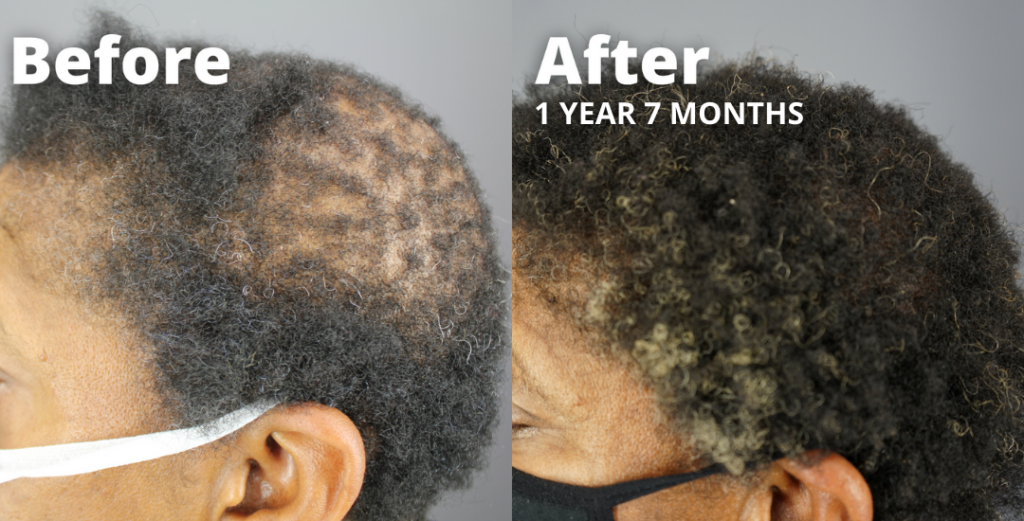
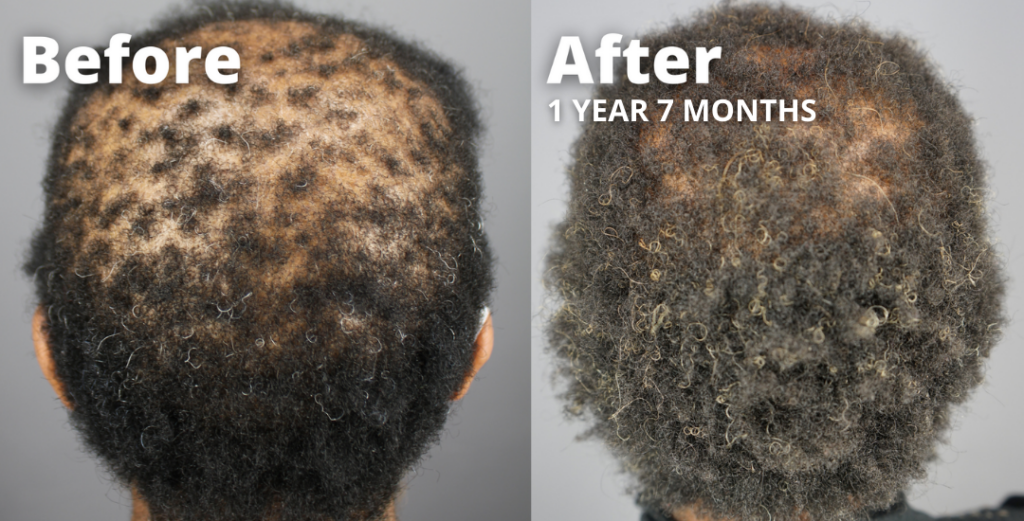
How Is CCCA Scarring Alopecia Treated?
CCCA has been a source of frustration for many patients and doctors alike.
It is stubborn to treat and is often resistant to many medications doctors use, such as pharmaceuticals and steroid injections into the scalp.
Current treatments for CCCA include:
- Immunosuppressants
- Topical steroids
- Steroid injections
- Tetracyclines
- Hydroxychloroquine
- Oral & topical minoxidil
- Calcineurin inhibitors
- Mycophenolate
- Cyclosporine
- Thalidomide
- Topical metformin
How Effective are General CCCA Treatments?
Although pharmaceutical drug-based treatments for CCCA exist, these treatments can be improved.
One fact to consider is how these treatments are often discontinued due to potentially dangerous side effect profiles from consistent usage of pharmaceutical drugs.
Furthermore, there are reports of poor compliance from patients undergoing these treatments. Many of them are frustrated by the lack of progress, the unpleasantness of repeated scalp injections, and other frequent complications [3-8].
Due to a combination of these factors, many CCCA patients undergo treatment, only to try several different prescribed methods to no effect.
Eventually, many CCCA patients lose a significant portion of their hair even if they catch it early on – resulting in near-total baldness and scarring, often leading to a lifelong need for wigs and headwear to hide their condition.
New Gashee CCCA Publication: A Significant Development for CCCA Hair Loss – The Role of Natural Products
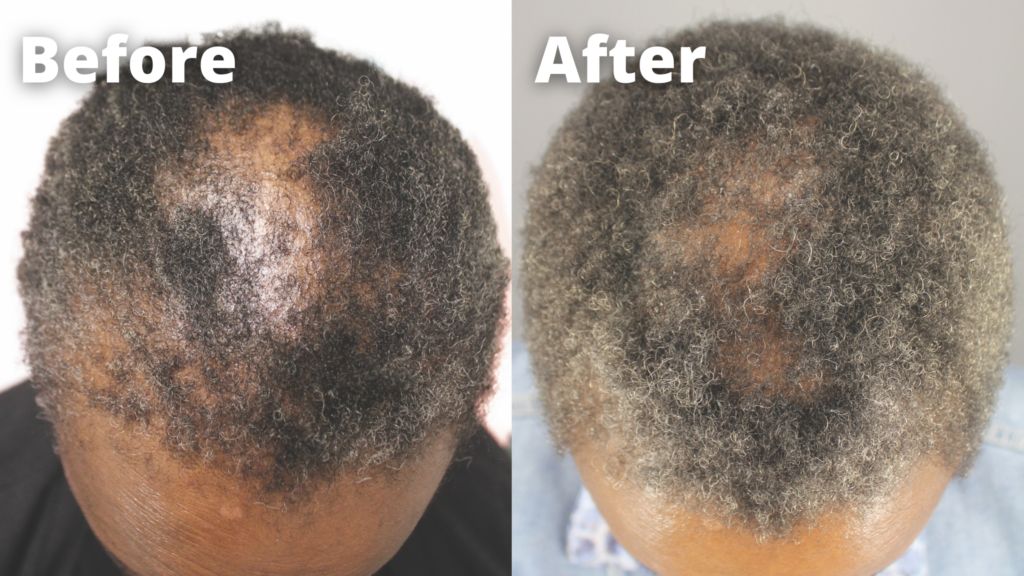
New GASHEE CCCA Publication: The new publication states that all CCCA patients in the study used Gashee and were able to reduce its symptoms.
The report also states that all patients showed significant hair growth.
The Significance of a Plant-Based Product
Although “natural product” does not guarantee compatibility with all users – as some users may pose allergies or reactions to certain plants – GASHEE’s natural ingredients background does pose the possibility of continued long-term use for those who are not allergic nor pose any reactions to its ingredients. The report highlights the potential of well-researched natural hair products in supporting hair health and hair growth in this form of scarring alopecia.*
Still, considering the current difficulty of popular treatments in treating CCCA patients, this publication highlights a significant development that warrants further study, as natural botanical products may be more amenable for long-term use with a potentially more favorable side effect profile. Most hair loss patients, including those affected with CCCA, have coincident hair health issues which must be addressed.
As more and more consumers favor a more holistic approach to wellness, natural products will soon be the way of the future.
“The ingredients in Gashee are sourced from around the globe using a proprietary compounding process that I personally developed to optimally preserve and deliver the beneficial molecules of the plants to the hair. Even the packaging took into account our respect for nature.”
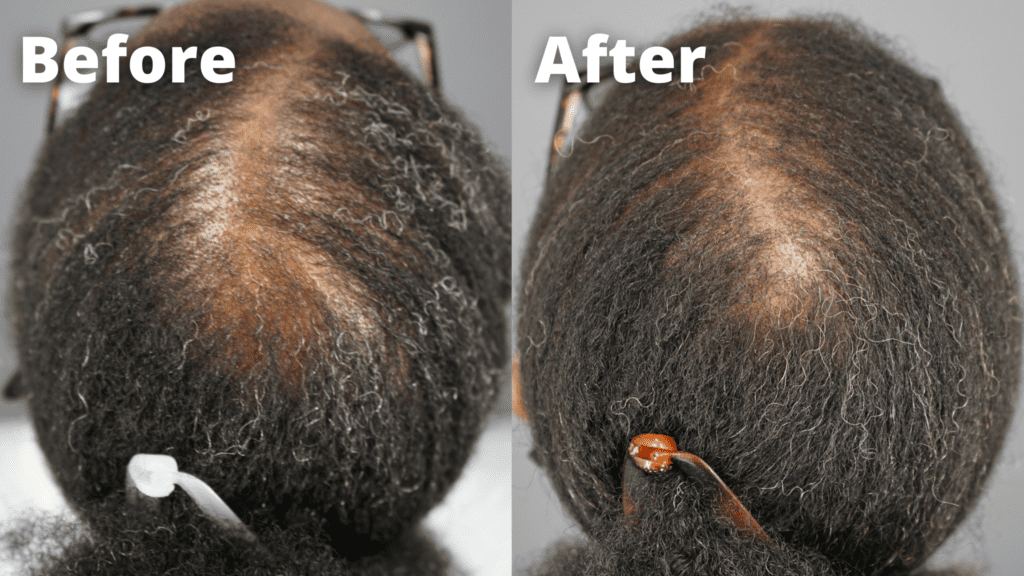
GASHEE CCCA Publication: Improving Hair Health in CCCA, Improves Quality of Life
We are happy that patients have improved their quality of life by improving their hair health even in harsh hair loss conditions such as CCCA through GASHEE natural Products.
After years of witnessing the devastating effects of CCCA and its frustrating effect on my patients, I cannot be happier witnessing the result of the work reported in the paper. I cannot wait to further study this botanical’s role on CCCA and other scarring alopecia.
As with all conditions related to alopecia or hair loss, improving the patient’s quality of life by minimizing their symptoms is the priority we aim for as dermatologists.
Next, we want to halt the progress of hair loss as much as possible and, finally, aim for a state where the patient will no longer need any treatments – a state where they can flourish comfortably on their own.
Why Prevention is the Best Cure for CCCA:
While we are encouraged by the reported findings, I have always emphasized the importance of preventive measures for my CCCA patients.
While the cause of CCCA is unknown, there are clear aggravators or precipitators of the condition that must be minimized. These include hair grooming practices such as tight braids, weaves, heavy or tight dreadlocks, and harsh chemicals. Here, the rule of thumb is to stop if it hurts or itches.
VIDEO: GASHEE Reported as First Botanical Product with Positive Response Towards CCCA
GASHEE Reported as First Botanical Product with Positive Response Towards CCCA – Video Results
PR: Newswire Link:https://www.prnewswire.com/news-releases/treatment-refractory-central-centrifugal-cicatricial-alopecia-responsive-to-a-novel-botanical-trea…
CCCA FAQ – Frequently Asked Questions
What were the patient results of the Gashee – CCCA Study?
According to the study, all patients’ scalp pruritus had stopped within two weeks of treatment, and significant hair regrowth was observed within two months.
All patients we stated to report a high satisfaction level without adverse effects from the Gashee products.
Can hair grow back from CCCA?
CCCA is a persistent and progressive condition that spreads and worsens over time.
Due to this, CCCA will result in permanent scarring of the hair follicles, leading to permanent or irreversible hair loss.
Is CCCA reversible?
Although later stages of CCCA result in permanent hair loss due to the permanent scarring of the hair follicles, if CCCA is treated effectively early on, it is possible to recover some lost hair. However, in its later stages, CCCA does create permanent damage to the hair follicles, which means that hair regrowth is very unlikely.
What are the factors that contribute to CCCA?
Many factors could contribute to the development of CCCA, such as:
- Genetics
- History of autoimmune disease
- Various hairstyling practices such as the use of excessive heat and tension (tight braids, tight weaves, tight dreadlocks), and tension chemical relaxers on the scalp
Although factors such as genetics and history of autoimmune disease may be beyond personal control, avoiding the various hairstyling practices mentioned above is recommended to reduce the likelihood of CCCA.
About Dr. Sanusi Umar, MD, FAAD
Dr. Umar is a board-certified dermatologist, a fellow of the American Academy of Dermatology, and a world-renowned hair expert with several related patents in hair transplantation. He is an associate faculty at the Department of Medicine, Dermatology Division, University of California, Los Angeles, Harbor-UCLA Medical Center, Torrance, where he leads the Scalp Disorders Specialty Clinic and private practice at Dr. U Hair and Skin Clinic in Manhattan Beach, California.
References
- Bin Saif GA, McMichael A, Kwatra SG, et al. Central centrifugal cicatricial alopecia severity is associated with cowhage-induced itch. Br J Dermatol. 2013;168(2):253–256. doi:10.1111/bjd.12043
- Aguh C, McMichael A. Central centrifugal cicatricial alopecia. JAMA Dermatol. 2020;156(9):1036. doi:10.1001/jamadermatol.2020.1859
- Araoye EF, Thomas JAL, Aguh CU. After using topical metformin, hair regrowth in 2 patients with recalcitrant central centrifugal cicatricial alopecia. JAAD Case Rep. 2020;6(2):106–108. doi:10.1016/j.jdcr.2019.12.008
- Olsen EA, Whiting D, Bergfeld W, Olsen EA, Whiting D, Bergfeld W, et al. A multicenter, randomized, placebo-controlled, double-blind clinical trial of a novel formulation of 5% minoxidil topical foam versus placebo in the treatment of androgenetic alopecia in men. J Am Acad Dermatol. 2007;57(5):767–774. doi:10.1016/j.jaad.2007.04.012
- Gathers RC, Lim HW. Central centrifugal cicatricial alopecia: past, present, and future. J Am Acad Dermatol. 2009;60(4):660–668. doi:10.1016/j.jaad.2008.09.066
- Callender VD, Kazemi A, Young CM, et al. Safety and efficacy of clobetasol propionate 0.05% emollient foam for the treatment of central centrifugal cicatricial alopecia. J Drugs Dermatol. 2020;19(7):719–724. doi:10.36849/JDD.2020.5201
- Okereke UR, Simmons A, Callender VD. Current and emerging treatment strategies for hair loss in women of color. Int J Womens Dermatol. 2019;5(1):37–45. doi:10.1016/j.ijwd.2018.10.021
- Herskovitz I, Miteva M. Central centrifugal cicatricial alopecia: challenges and solutions. Clin Cosmet Investig Dermatol. 2016;9:175–181. doi:10.2147/CCID.S100816
- 2022. [online] Available at: <https://www.aocd.org/page/CCCA> [Accessed 22 April 2022].
Further Reading
More information on what is Central Centrifugal Cicatricial Alopecia CCCA?
Preparing Scarring Alopecia Patients for Hair Transplant: Is Hair Transplant Possible with CCCA?




